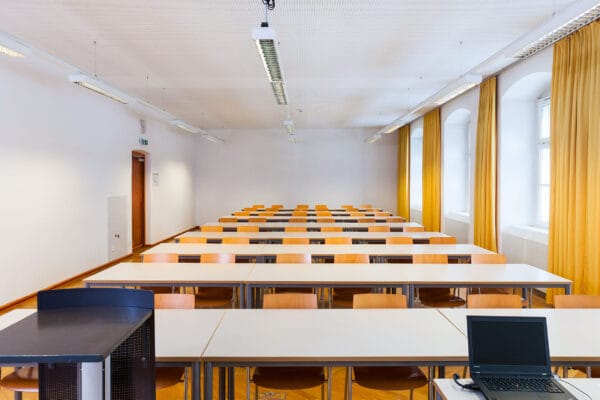
NAME:
Theologie – SR VI
BUILDING:
Theologie
FLOOR:
1
TYPE:
Seminar Room
CAPACITY:
48
ACCESS:
Only Participants
EQUIPMENT:
Beamer, PC, WLAN (Eduroam), Overhead, Flipchart, Blackboard, Handicapped Accessible, LAN, Speaker Desk
After traveling through the steep and beautiful mountains of Southeast Tibetan plateau, we were fascinated by the unique biodiversity of this easternmost part of the Himalayas and the nearby Hengduan Shan mountain range, located at the border between Tibet and Yunnan, China. This region is one of the world’s top biodiversity hotspots. In 2005 and 2009, we visited the western face of Kawagebo (Meili Xue Shan)(summit at 6740 m) and the valley of the Shequ River, including its namesake glacier, to conduct floristic and geomorphological investigations. What makes this glacier so unique are two special factors. Firstly, a thick layer of rock and soil covers its entire surface, which enables primary succession, ultimately leading to the establishment of a forest, dominated by the poplar species Populus pseudoglauca, the sea buckthorn Hippophae tibetana and a Willow (Salix spec.). Secondly, the glacier flows in a narrow valley (direct sunlight only from midday onwards) from 3600 m a.s.l. down to the subtropical climate zone (the end of the glacier is at 2950 m a.s.l.). Through tree ring analyses, we determined that the maximum age of trees growing on the glacier is 60 years. Within the 5 to 6 km long glacier, several vegetation islands have formed, supporting forest growth. However, due to the glacier’s dynamic movements over a highly structured subsurface, several dead zones (crevasses) exist, beyond which these forests cannot survive. The densest and oldest forests are found near the glacier’s melting edge (terminus), where this “moving forest” reaches its final boundary.

We and use cookies and other tracking technologies to improve your experience on our website. We may store and/or access information on a device and process personal data, such as your IP address and browsing data, for personalised advertising and content, advertising and content measurement, audience research and services development. Additionally, we may utilize precise geolocation data and identification through device scanning.
Please note that your consent will be valid across all our subdomains. You can change or withdraw your consent at any time by clicking the “Consent Preferences” button at the bottom of your screen. We respect your choices and are committed to providing you with a transparent and secure browsing experience.